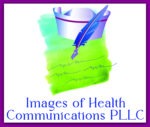Substance Use Disorders and the Unborn

Welcome to Insights! Please enjoy the articles created specifically for Soul’s Harbor and provided on a monthly basis. You may expect health related articles with a focus on addiction and recovery.
 Substance Use Disorders and the Unborn
Substance Use Disorders and the Unborn
She quietly cried while speaking of her young son’s suicide. “It’s my fault. He was born addicted because of me. He never did well in his life. Not from day one. I think about it every day, sometimes all day. How can I explain to women how dangerous drug use is?”
Drug addiction is a powerful brain disorder that can drive our behavior in spite of personal distress and negative consequences. We know drugs are powerful, partly because the brain does not have any way to control their levels or actions, and drugs overpower the brain.
They affect the part of our brain that is the controllers of our behavior. These parts contain neurotransmitters and circuits that affect personal and species survival; they are the circuits associated with feeding, sex and other life-sustaining processes.
Prior articles have focused on the brain, how it works and what drugs do to the brain and so forth. But those articles have not described or addressed the emotional misery that drugs cause.
While these articles are written for Soul’s Harbor – A Recovery Community for Homeless Men, many men have crossed paths with addicted women. You may have impregnated a woman while one or both of you were actively using. This article sheds light on the horrible consequences that this child, you both created while in active addiction, must bear. Sometimes these consequences may be for the child’s lifetime. Perhaps you are the child of an addicted mother and/or father.
Remember, addictions or substance use disorders are no respecter of persons.
Consider the Baby
If a woman is pregnant and has a substance use disorder, the drugs can pass through the placenta and reach the fetus and the developing brain. This results in babies being born with drug dependence and withdrawal, and with other drug-related toxicities. Because of the serious danger to the unborn, pregnant mothers who use drugs or alcohol must get help and direction from doctors as soon as possible.
Babies’ drug withdrawal syndromes include neonatal abstinence syndrome (NAS) which is mostly about opioids, neonatal opioid withdrawal syndrome (NOWS) and others.
Babies and Signs of NAS
A baby cannot act on its own and do self-harm behavior. Some avoid the word addicted and refer to such babies as being passively dependent. Dependence means there will be withdrawal symptoms, as we have discussed.
Neonatal abstinence syndrome (NAS) can be difficult to quantify, since the number of cases continues to increase each year. One study suggests there is one newborn diagnosed with NAS every 25 minutes, which equals between 2 to 7 newborns out of every 1,000 births.1
The signs occur within the first day of life to 48 to 72 hours of birth and can last from days to months. This depends on which drugs the mother has taken, how much, and for how long. The actual signs can include the following 1:
- Fussiness, crying with a high-pitched sound.
- Muscle problems such as tremors, seizures, twitching.
- Trouble sleeping with much yawning.
- Poor breast feeding.
- Diarrhea or vomiting.
- Low birth weight or slow weight gain.
- Stuffy nose, sneezing or rapid breathing.
- Fever, sweating or blotchy skin.
Long Term Effects of NAS
Management of NAS must also address 2 :
- Maternal issues such as coexisting mental illness.
- Intimate partner violence.
- Limited healthcare access to support the mother-infant relationship is necessary for the infant’s normal development.
NAS is associated with long-term consequences, including, but not limited to neurodevelopmental delays, behavioral problems and when left untreated, death.2
How is NAS prevented?
The most obvious answer is avoiding drugs if you are in a position to get pregnant. If possible, use birth control until you have given up drugs. If you are pregnant and a drug user, talk to a doctor at once. Find a program that specifically cares for drug dependent mothers. This will give you and the baby a better chance of doing well.
Babies and Signs of NOWS
The current opioid epidemic has resulted in a similarly large increase of pregnant women using opioids, which has led to an epidemic of newborns with neonatal opioid withdrawal syndrome (NOWS).3
Acute neonatal opioid withdrawal syndrome (NOWS) symptoms4 :
- High-pitched cry
- Irritability
- Difficulty sleeping
- Increased muscle tone
- Tremors
- Skin excoriation due to excessive movement
- Hyperthermia (high body temperature)
- Loose stools
- Yawning
- Sweating
- Nasal stuffiness
- Sneezing
NOWS is a condition seen among infants born to mothers who have used opioids during the course of their pregnancy; it occurs because opioids readily cross the placenta causing the fetus to become dependent on opioids
The term NOWS is often used interchangeably with the more established term, neonatal abstinence syndrome (NAS). More recently, the term NOWS has been used to refer to infants born to opioid-using mothers, whereas NAS has been used by some professionals to refer to infants born to mothers with polysubstance use.5-7
Long Term Effect of NOWS
Infants with NOWS, as they develop, should be assessed for 8:
- Growth and behavioral milestones to identify failure to thrive.
- Neurodevelopmental assessments are necessary to identify cognitive and motor deficits.
- Psychological and behavioral assessments look to find any learning difficulties or attention-deficit/hyperactivity disorder (ADHD) symptoms when they enter school.
Alcohol and Babies
I have explained NAS and NOWS. But problems with other drugs are significant. Fetal alcohol spectrum disorder (FASD) is associated with alcohol use by the pregnant mother and causes profound consequences for the child.
Alcohol use is prevalent in society and FASD is well recognized. It is deemed, in many ways, more serious than NAS and NOWS.
There is NO CURE for fetal alcohol syndrome. What are the signs and symptoms of FASD? The signs and symptoms of fetal alcohol syndrome can vary. One child might have only a few, while another child could experience all of them. Infants Symptoms that infants with fetal alcohol syndrome could experience include 9: Early Childhood and Beyond Symptoms that may develop over time in people with fetal alcohol syndrome include 9: The Centers of Disease Control (CDC) and other scientists estimate less than 2 cases of FAS in every 1,000 live births in the United States. When researchers look at the whole spectrum disorders (FASD), the frequency may be as high as 1 to 5 out of every 100 kids in the U.S. and Western Europe.10 In 2019, CDC researchers found that 1 in 9 pregnant women drank alcohol in a 30-day period of time.10 Prenatal alcohol exposure is a leading preventable cause of birth defects and neurodevelopmental deficits in the United States.11 Aside from the damage due to drugs, there are many other causes of birth defects. They could be due to: Reasons Women Turn to Drugs: Health Issues for Women Differ from Men12: Role of the Father It is clear that drug use by the mother can have damaging effects on children. But drug use by the father can also have serious effects and these seem to be heritable, transmissible from the father to the child. Addictions are highly heritable disorders, with heritability estimates ranging from 39% to 72%. Multiple studies suggest a link between paternal drug abuse and addiction in their children. 12 Men are more likely than women to use almost all types of illicit drugs, and illicit drug use is more likely to result in emergency department visits or overdose deaths for men than for women. “Illicit” refers to use of illegal drugs, including marijuana (according to federal law) and misuse of prescription drugs. For most age groups, men have higher rates of use or dependence on illicit drugs and alcohol than do women.13 Familial inheritance of drug abuse is composed of both genetic and environmental factors. Epigenetic (the changes in organisms caused by modification of the gene expression rather than alteration of the genetic code itself) transgenerational inheritance may provide a means by which parental drug use can influence several generations of offspring. Recent evidence suggests that parental drug exposure produces behavioral, biochemical, and neuroanatomical changes in future generations.14 Personal Note On May 30, 2006, a perfectly formed baby boy was stillborn at 5 months. His parents were both active in their addiction to methamphetamine and other drugs when his conception occurred. Our son successfully completed a 45-day in-patient rehab. After only being out of rehab for a couple of days, he saw the stillbirth of his son, our only grandchild. The mother of his child refused to get prenatal care, despite my pleading for her to do so, and telling her we would cover the cost of her medical care. This is just an example of the emotional misery that substance use disorder causes. It affects so many lives! Life spiraled even more out of control. Relapses occurred. As time went on, prison sentences were handed down. Their doomed relationship ended. After prison and multiple trips to drug rehab, my son, after many years, finally hit rock bottom and the only way was up with the help of God. December 3, 2023, marked our son’s 10 years of sobriety. God is our only hope! My Challenge to You Use protection when engaging in sexual intercourse. If you know a woman is pregnant and she is using, please do all that you can to help her get the medical care that she and her unborn baby needs. She may totally reject your help, but try. So many people do not want to get involved. Please do not be one of those people. References
Children born with this syndrome experience the symptoms throughout their entire lives. A healthcare provider can manage some symptoms with treatment, but they won’t go away.9

Cynthia Blair RN MA–December 2023
For information regarding intake/admission into our recovery facility, please contact:
Dispatch Representative
Soul’s Harbor, Inc.
13134 Nile Drive
Dallas, Texas 75253
972.286.1940
972.286.5282 Fax
Soul’s Harbor Substance Abuse Program Questions and Intake
Please contact our intake Manager
Cell number 214-663-9684
contact@soulsharbordallas.org
New Online Donation Processing:
Soul’s Harbor, Inc.
13134 Nile Drive
Dallas, Texas 75253
972.286.1940
972.286.5282 Fax
donate@soulsharbordallas.org
Soul’s Harbor can now provide the convenience of taking your donation request online. Just follow the link to our online “Household Donation Request Form”. We are also now taking vehicle donations and have an online donation processing form for this too. “Vehicle Donation Request Form”
To help Soul’s Harbor financially you can donate by clicking the donate button.